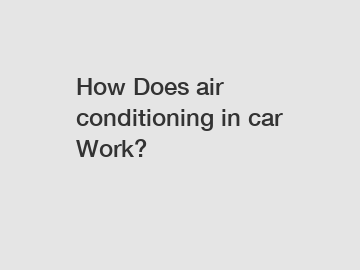How do I know if my oil seal is bad?
Oil seals play a crucial role in preventing fluid leakage and maintaining the integrity of machinery and automotive components. When an oil seal becomes worn or damaged, it can lead to leaks, contamination, and potentially serious mechanical problems.
1. Oil Leaks:One of the most obvious signs of a bad oil seal is oil leaks. If you notice oil puddles or drips forming beneath your vehicle or equipment, it's likely that the oil seal is compromised. Leaks may occur around the seal itself or in the area where the seal meets the shaft or housing.
2. Low Oil Levels:A sudden drop in oil levels without a noticeable leak could indicate that oil is escaping through a faulty seal. Keep an eye on your vehicle's oil level and top up as needed. If you find yourself needing to add oil frequently, it may be a sign of a seal problem.
3. Contaminated Oil:Inspect the oil for signs of contamination, such as a milky or foamy appearance, which could indicate the presence of coolant or water. Contaminated oil can cause damage to internal components and may be a result of a leaking oil seal allowing fluids to mix.
4. Excessive Smoke or Burning Smell:If oil is leaking onto hot engine components, it can produce smoke or a burning smell as the oil burns off. This can be particularly noticeable when driving or after stopping the vehicle. Excessive smoke or a strong odor of burning oil should prompt immediate investigation.
5. Noise or Vibration:A damaged oil seal may lead to increased friction or misalignment of components, resulting in noise or vibration during operation. Listen for any unusual sounds, such as grinding or whining, and pay attention to any vibrations felt through the steering wheel or pedals.
6. Reduced Performance:In some cases, a faulty oil seal can affect the performance of the vehicle or equipment. You may notice a decrease in power, acceleration, or fuel efficiency. Addressing seal issues promptly can help prevent further damage and restore optimal performance.
Additional resources:Top Sales on Forklift Radiators – Solve Your Heating Problems!
Ultimate Guide: Upgrading Radiator for Trucks?
Which features make Avalon Heavy Duty '00-04 reliable?
How can car radiators improve engine performance?
The Ultimate Guide to Perkins Coolant Systems
Unveiling the Versatility and Benefits of Combi Seals in Industrial Applications
How Much Does It Cost to Repair a Car Radiator
What to Do if You Suspect a Bad Oil Seal:If you suspect that an oil seal is bad based on the signs mentioned above, it's essential to take action promptly to avoid further damage and costly repairs. Here are some steps to follow:
Visual Inspection: Inspect the area around the suspected oil seal for signs of leakage or damage.
Check Oil Levels: Monitor oil levels regularly and top up as needed to ensure proper lubrication.
Consult a Professional: If you're unsure about the condition of an oil seal or how to address the issue, consult a qualified mechanic or technician for inspection and repair.
Replace the Seal: If a faulty oil seal is identified, replace it with a new seal of the appropriate size and material for your vehicle or equipment.
Preventive Maintenance: Incorporate regular inspection and maintenance of oil seals into your preventive maintenance schedule to detect and address issues before they escalate.
Recognizing the signs of a bad oil seal is essential for maintaining the reliability and performance of your vehicle or equipment. By staying vigilant and addressing seal issues promptly, you can prevent leaks, contamination, and mechanical failures, ensuring smooth operation and prolonging the lifespan of your machinery. If you suspect a faulty oil seal, don't delay in seeking professional inspection and repair to avoid costly consequences down the line.
Top Tips for Keeping Your Passenger Vehicle Radiator Cool
Key Questions to Ask When Ordering Radiators for Cars
5 Faulty Radiator Symptoms You Should Know!
What Is Leaf Spring and How Does It Work?
What is the leaf spring used for?
Cutting Costs: How to Save on Radiators
How to Choose FREIGHTLINER B2 BUS CHASSIS MK 11-13 AT: A Comprehensive Guide
None
Related Articles










Comments